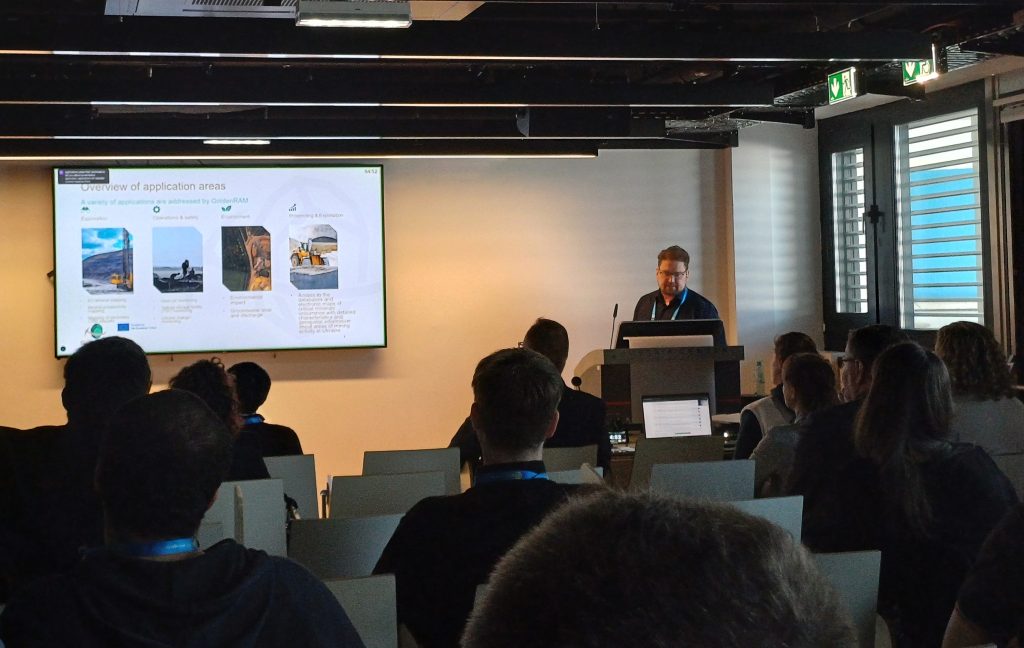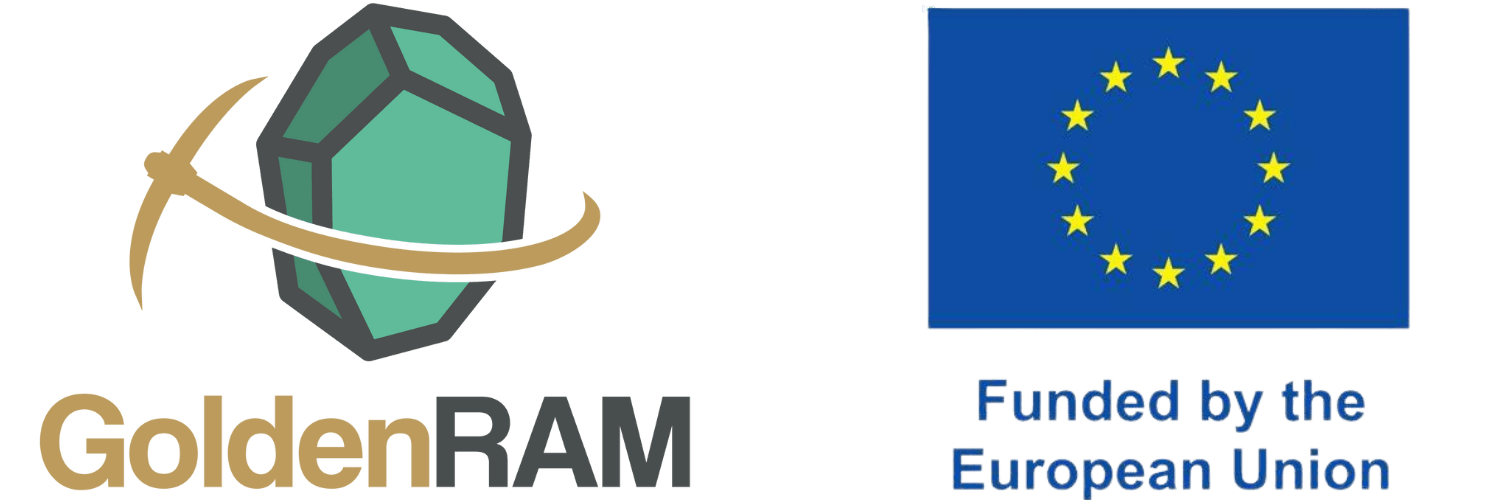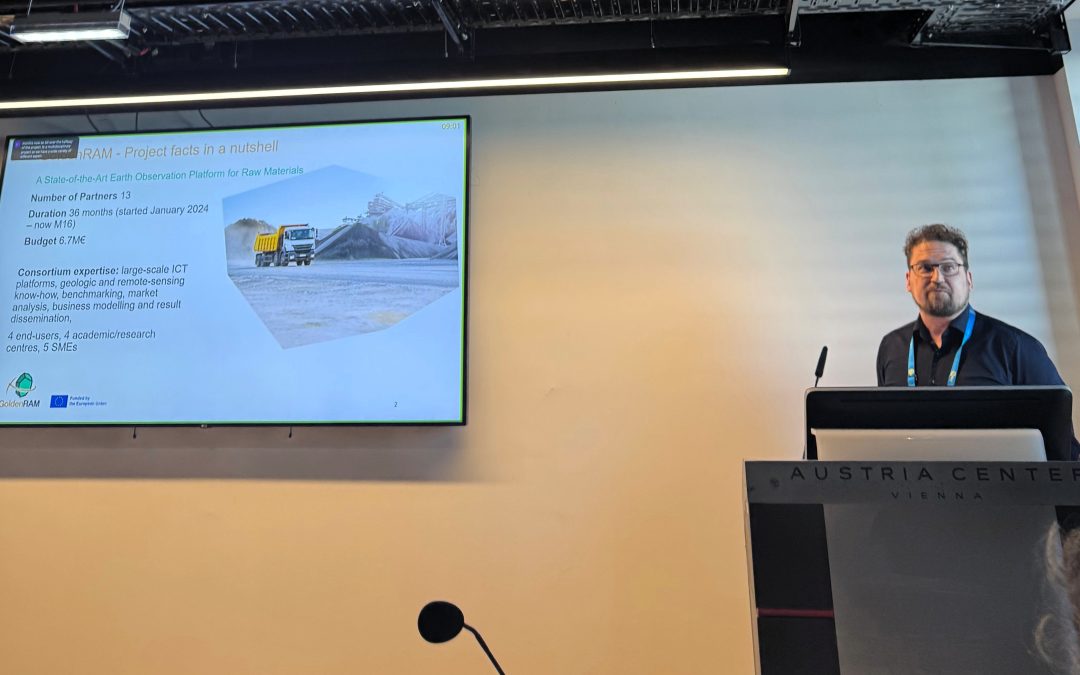The GoldenRAM project was proud to participate in the European Geosciences Union (EGU) General Assembly 2025, held in Vienna from 27 April to 2 May 2025. As one of the world’s leading events for Earth, planetary, and space sciences, EGU brings together thousands of researchers, policymakers, and innovators to explore the latest scientific developments and technological advances. GoldenRAM contributed to two important sessions, one focused on cutting-edge landslide monitoring technologies, and another on collaborative actions across the European raw materials value chain, highlighting the project’s integrated approach to geohazard monitoring and sustainable critical raw materials (CRM) management.
Critical Raw Materials and Collaboration Across Europe
In the session “Collaborative Actions Across the European Raw Material Value Chain”, Marko Paavola from VTT presented “EO Platform Supporting Critical Raw Materials Industry in Europe” on behalf of GoldenRAM.
The session brought together a broad spectrum of Horizon Europe projects working toward the sustainable exploration, monitoring, and extraction of critical raw materials (CRMs). Projects such as AGEMERA, EIS, MultiMiner, AVANTIS, SEMACRET, S34I, DeepBEAT, and DEXPLORE shared insights along with GoldenRAM into AI integration, novel Earth Observation processing algorithms, non-invasive geophysical techniques, innovative mineral system modelling, and advanced exploration strategies, each contributing to a more sustainable and secure raw materials value chain in Europe.

Marko Paavola delivers GoldenRAM’s presentation on supporting Europe’s critical raw materials sector through advanced EO platforms and AI tools
GoldenRAM’s presentation highlighted how an Earth Observation (EO) platform enhanced with artificial intelligence tools can support the mining sector across multiple fronts. From reducing the environmental footprint of exploration to improving planning, operations, and reporting at mine sites, the platform is designed to offer tangible benefits for both industry and regulators. Monitoring of tailings dams, volume changes, and other geotechnical risks enhances the safety of people and the environment alike. By delivering responsible production tools and supporting transparent communication, GoldenRAM also contributes to increasing public acceptance of mining activities in Europe, a key step toward reducing reliance on imported raw materials.

Emphasising the impact of AI-enhanced EO platforms on mining safety, sustainability, and public acceptance
At the same time, the presentation acknowledged the complexity of building such a multidisciplinary platform. Challenges remain, especially in aligning the objectives of industry and academia, and navigating legal and regulatory hurdles when bringing solutions to market. Yet, the potential rewards are significant: not only can the platform serve both commercial and public-sector needs, but it can also help attract new talent and innovation into Europe’s evolving raw materials sector.
The session closed with a panel discussion, highlighting a shared understanding across projects:
- Transparent communication and community engagement are as vital as technological advances.
- Public acceptance and trust are key to unlocking Europe’s raw materials potential sustainably.
Monitoring Landslides in a Changing Climate
Anna Reichstein from BGR contributed to session NH3.8 “Landslide Monitoring: Recent Technologies and New Perspectives”, which explored how technological innovation is transforming the way we observe and manage landslide risks. As landslides and geo-hydrological hazards increase worldwide, driven by climate change, urbanisation, and human activity, there is a growing need for reliable, cost-effective monitoring systems that support both long-term mitigation and rapid emergency response.

Anna Reichstein presents GoldenRAM’s landslide monitoring methodology
A central theme of the session was the versatility and precision of radar-based systems. From ground-based radar used in open-pit mines, to Doppler radar for early warning of avalanches and rockfalls, and satellite-based sensors for tracking slow, large-area deformations, each technology is tailored to specific risk scenarios. The choice of monitoring system depends on the type, speed, and scale of movement, with different technologies suited to rapid, large-displacement events versus slow, millimetre-scale changes occurring over years.
Temporal resolution also plays a critical role: real-time, near-real-time, and deferred-time approaches are all used depending on the risk level and nature of the phenomenon being monitored.
The session also showed how AI and data fusion techniques are enhancing monitoring capabilities, for instance, by combining time-lapse imagery with machine learning to detect subtle terrain shifts. Integrating remote sensing with in-situ measurements is proving vital for generating more robust datasets and building a clearer picture of landslide dynamics. These multi-platform, multi-temporal strategies are increasingly used for risk assessment at both local and regional scales.
Importantly, the session aligned with the goals of the International Consortium on Landslides, promoting scientific collaboration, geoscience integration, and research for societal benefit. It also drew valuable connections with other EGU sessions focusing on the European Ground Motion Service (EGMS) and geo-hazards in the context of climate change, underlining the urgent need for global solutions to shifting ground risks.
Bridging Innovation and Impact
GoldenRAM’s participation in EGU 2025 underscored the project’s commitment to bridging scientific innovation with practical solutions for geohazard monitoring and sustainable raw materials management. By contributing to both technical and policy-oriented discussions, the project continues to foster collaboration across disciplines and sectors—supporting a safer, more resilient, and resource-secure Europe.

